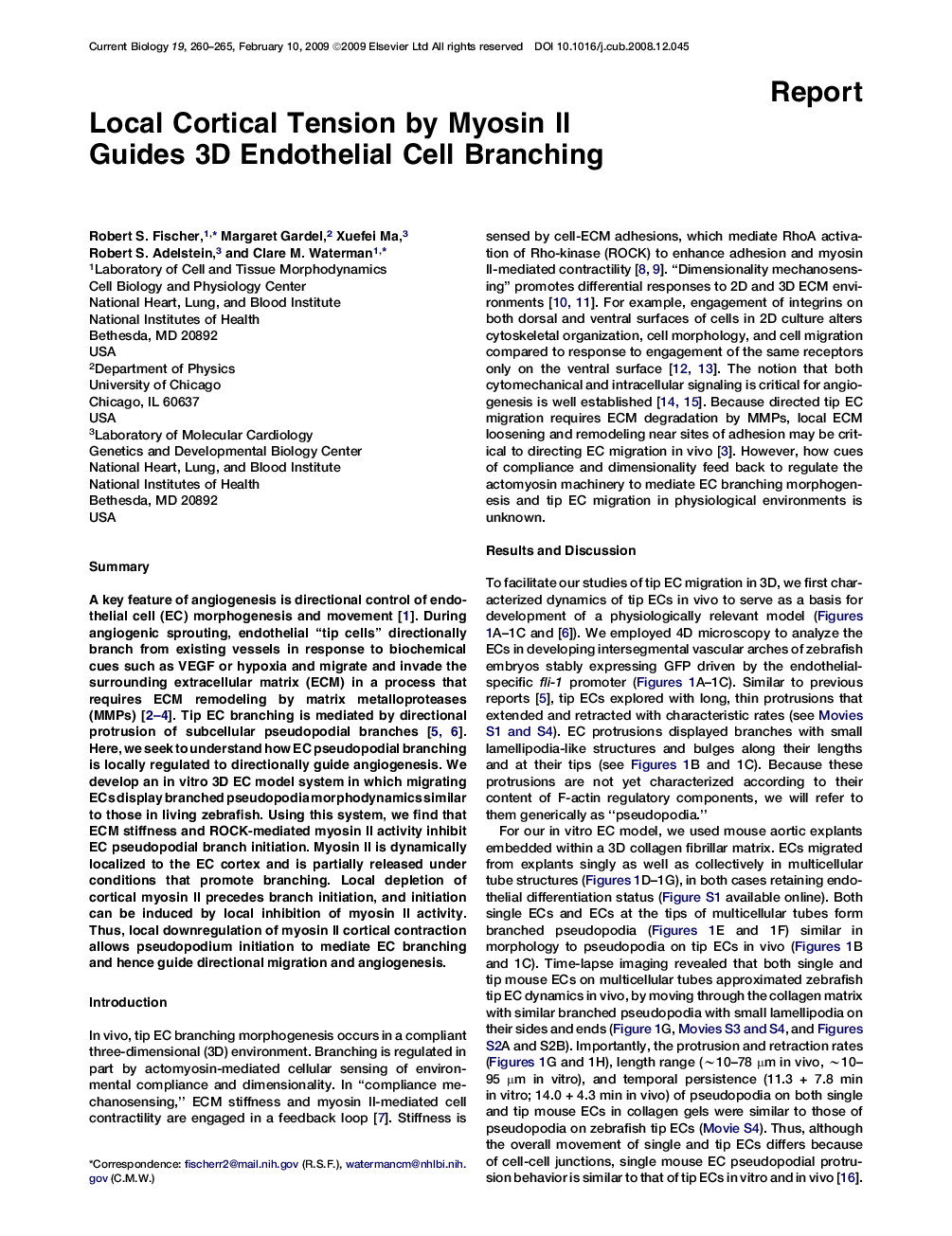| Article ID | Journal | Published Year | Pages | File Type |
|---|---|---|---|---|
| 2043591 | Current Biology | 2009 | 6 Pages |
Abstract
A key feature of angiogenesis is directional control of endothelial cell (EC) morphogenesis and movement [1]. During angiogenic sprouting, endothelial “tip cells” directionally branch from existing vessels in response to biochemical cues such as VEGF or hypoxia and migrate and invade the surrounding extracellular matrix (ECM) in a process that requires ECM remodeling by matrix metalloproteases (MMPs) [2-4]. Tip EC branching is mediated by directional protrusion of subcellular pseudopodial branches [5, 6]. Here, we seek to understand how EC pseudopodial branching is locally regulated to directionally guide angiogenesis. We develop an in vitro 3D EC model system in which migrating ECs display branched pseudopodia morphodynamics similar to those in living zebrafish. Using this system, we find that ECM stiffness and ROCK-mediated myosin II activity inhibit EC pseudopodial branch initiation. Myosin II is dynamically localized to the EC cortex and is partially released under conditions that promote branching. Local depletion of cortical myosin II precedes branch initiation, and initiation can be induced by local inhibition of myosin II activity. Thus, local downregulation of myosin II cortical contraction allows pseudopodium initiation to mediate EC branching and hence guide directional migration and angiogenesis.
Related Topics
Life Sciences
Agricultural and Biological Sciences
Agricultural and Biological Sciences (General)
Authors
Robert S. Fischer, Margaret Gardel, Xuefei Ma, Robert S. Adelstein, Clare M. Waterman,
